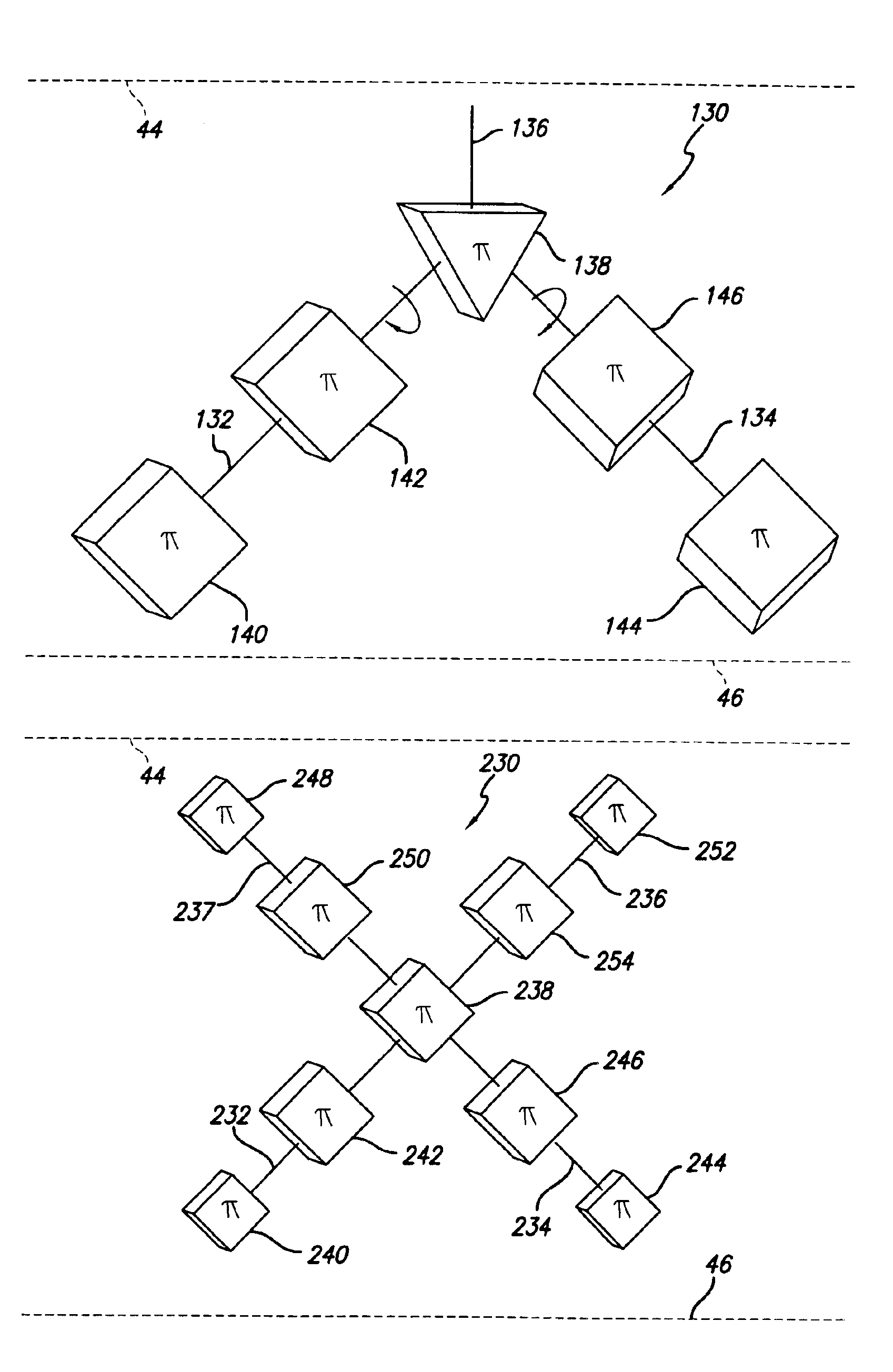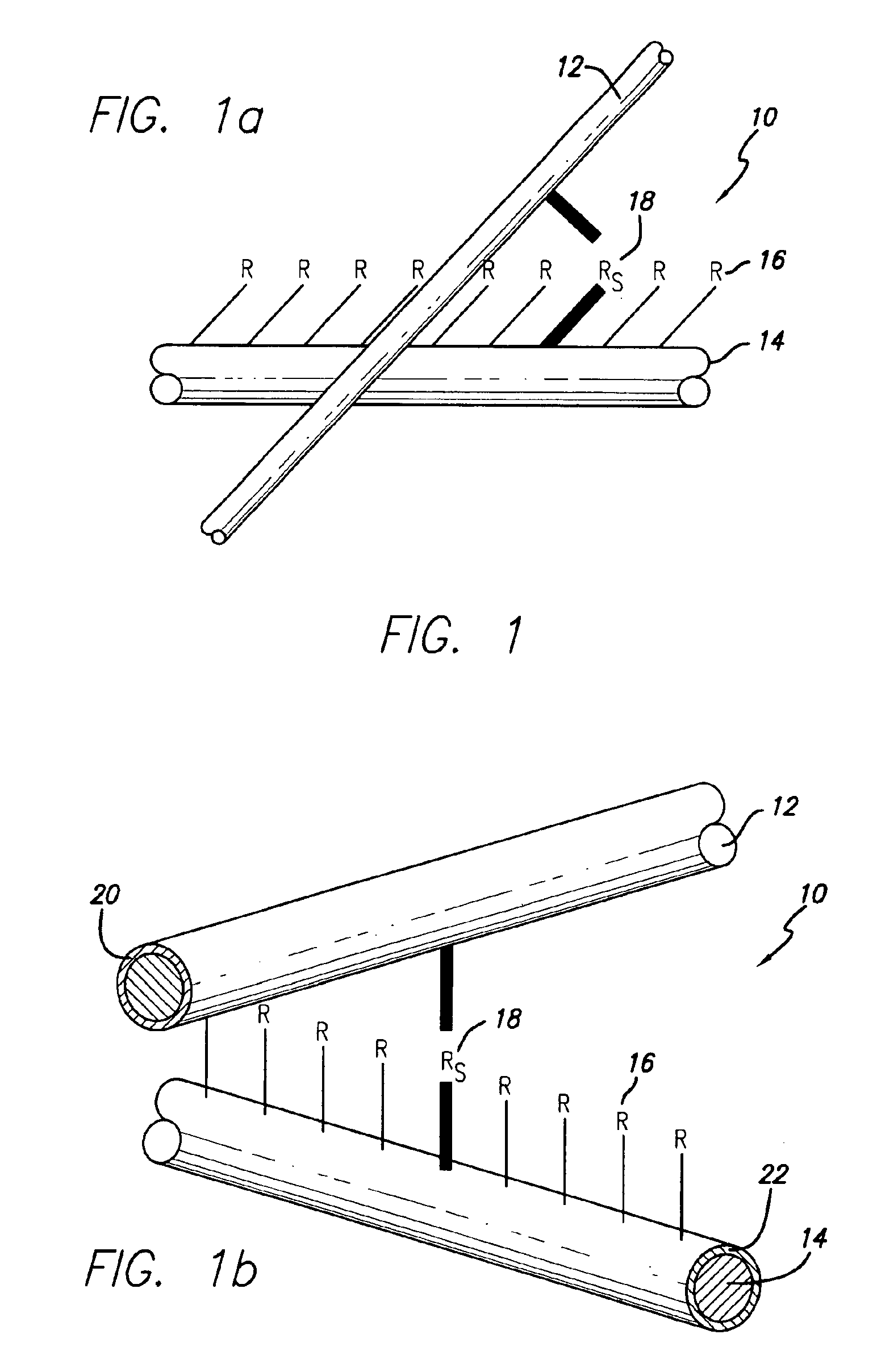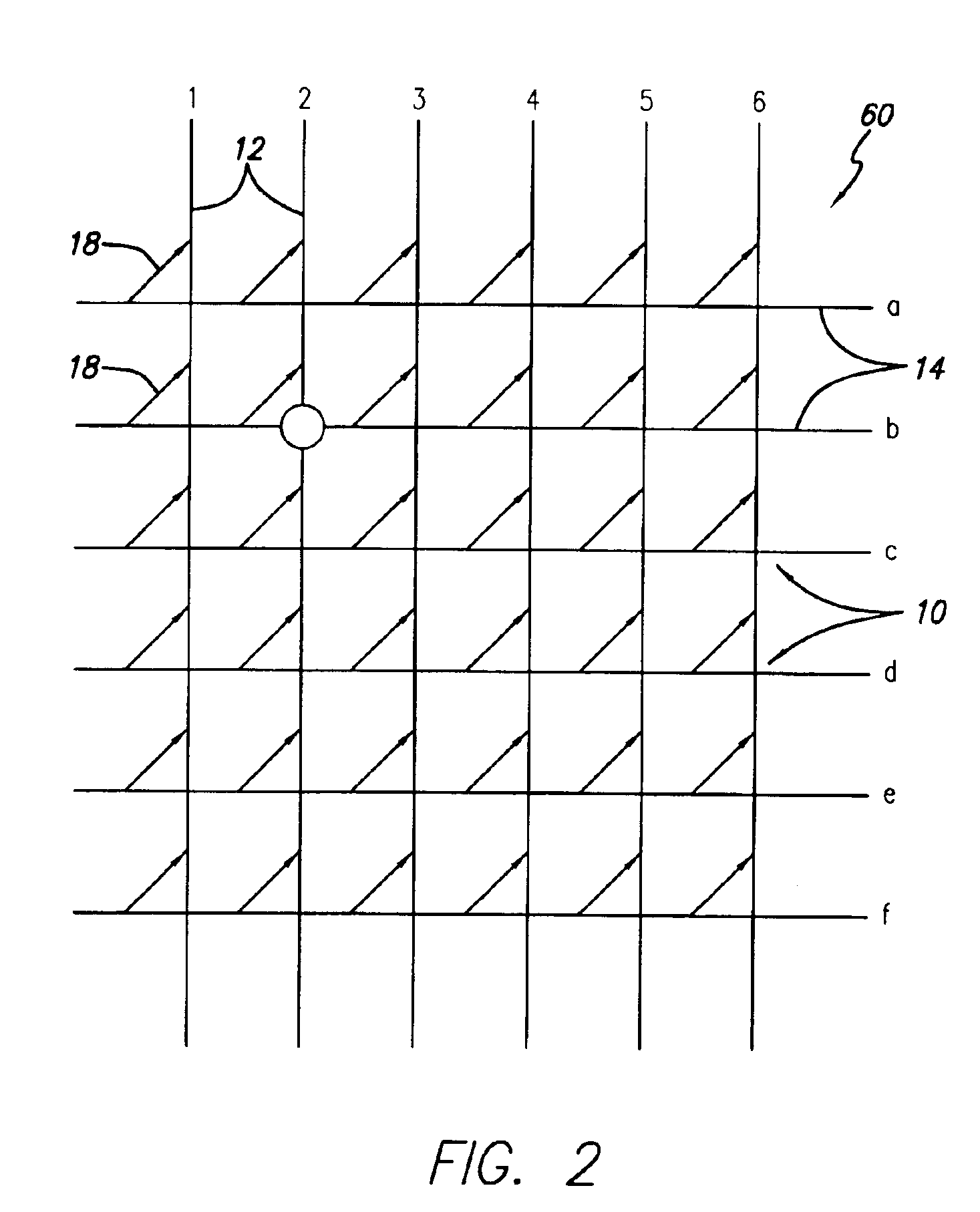E-field-modulated bistable molecular mechanical device
a mechanical device and field-modulated technology, applied in the field of electronic and optical devices, can solve the problems of slow switching times of molecules, irreversible switches, and large energy expenditure to toggle switches, and achieve the effects of small band gaps, small band gaps, and large band gaps
- Summary
- Abstract
- Description
- Claims
- Application Information
AI Technical Summary
Benefits of technology
Problems solved by technology
Method used
Image
Examples
second embodiment
[0069]Since each colorant molecule in colorant layer 301 is transparent outside of the colorant absorption band, then multiple colorant layers may be superimposed and separately addressed to produce higher resolution color displays than currently available. FIG. 4 is a schematic illustration of this A high resolution, full color, matrix addressable, display screen 400 comprises alternating layers of transparent electrodes—row electrodes 401, 403 and column electrodes 402 and 404—and a plurality of colorant layers 405, 407, 409, each having a different color molecule array. Since each pixel in each colorant layer may be colored or transparent, the color of a given pixel may be made from any one or a combination of the color layers (e.g., cyan, magenta, yellow, black) at the full address resolution of the display. When all colorant layers 405, 407, 409 for a pixel are made transparent, then the pixel shows the background substrate 303 (e.g., white). Such a display offers the benefit ...
third embodiment
[0072]More specifically, the third embodiment as shown in FIG. 5 comprises a display screen 502, a scanned electrode array 504, and array translation mechanism 501 to accurately move the electrode array across the surface of the screen. The display screen 502 again comprises a background substrate 303, a transparent view-through layer 305, and at least one bi-stable molecule colorant layer 301. The colorant layer 301 may include a homogeneous monochrome colorant (e.g., black) or color mosaic, as described herein above. The scanned electrode array 504 comprises a linear array or equivalent staggered array of electrodes in contact or near contact with the background substrate 303. A staggered array of electrodes may be used, for example, to minimize field crosstalk between otherwise adjacent electrodes and to increase display resolution.
[0073]In operation, each electrode is sized, positioned, and electrically addressed to provide an appropriate electric field, represented by the arrow...
example 1a
[0096 is a generic molecular example of the teachings herein. In this molecule, a Y configuration, similar to that depicted in FIG. 6, is employed. However, in place of the insulating branch 34, a second rotor is employed on the second branch, connected between the junction unit and another stator unit.
where:
[0097]A is an Acceptor group comprising an electron-withdrawing group selected from the group consisting of: (a) hydrogen, (b) carboxylic acid and its derivatives, (c) sulfuric acid and its derivatives, (d) phosphoric acid and its derivatives, (e) nitro, (f) cyano, (g) hetero atoms selected from the group consisting of N, O, S, P, F, Cl, and Br, (h) functional groups with at least one of the hetero atoms, (i) saturated or unsaturated hydrocarbons, and (j) substituted hydrocarbons;
[0098]D is a Donor group comprising an electron-donating group selected from the group consisting of: (a) hydrogen, (b) amines, (c) OH, (d) SH, (e) ethers, (f) saturated or unsaturated hydrocarbons, (g...
PUM
| Property | Measurement | Unit |
|---|---|---|
| size | aaaaa | aaaaa |
| heights | aaaaa | aaaaa |
| diameter | aaaaa | aaaaa |
Abstract
Description
Claims
Application Information
 Login to View More
Login to View More - R&D
- Intellectual Property
- Life Sciences
- Materials
- Tech Scout
- Unparalleled Data Quality
- Higher Quality Content
- 60% Fewer Hallucinations
Browse by: Latest US Patents, China's latest patents, Technical Efficacy Thesaurus, Application Domain, Technology Topic, Popular Technical Reports.
© 2025 PatSnap. All rights reserved.Legal|Privacy policy|Modern Slavery Act Transparency Statement|Sitemap|About US| Contact US: help@patsnap.com



